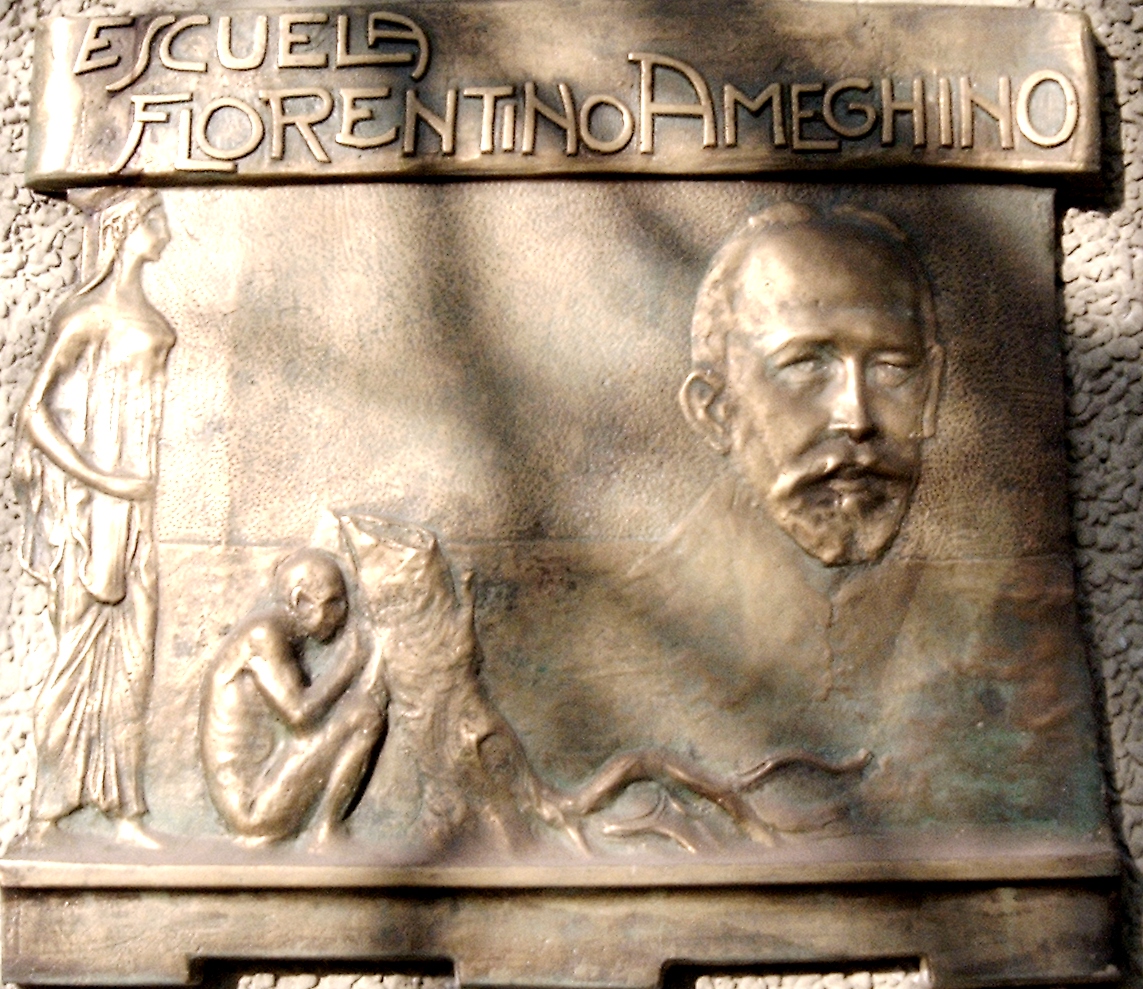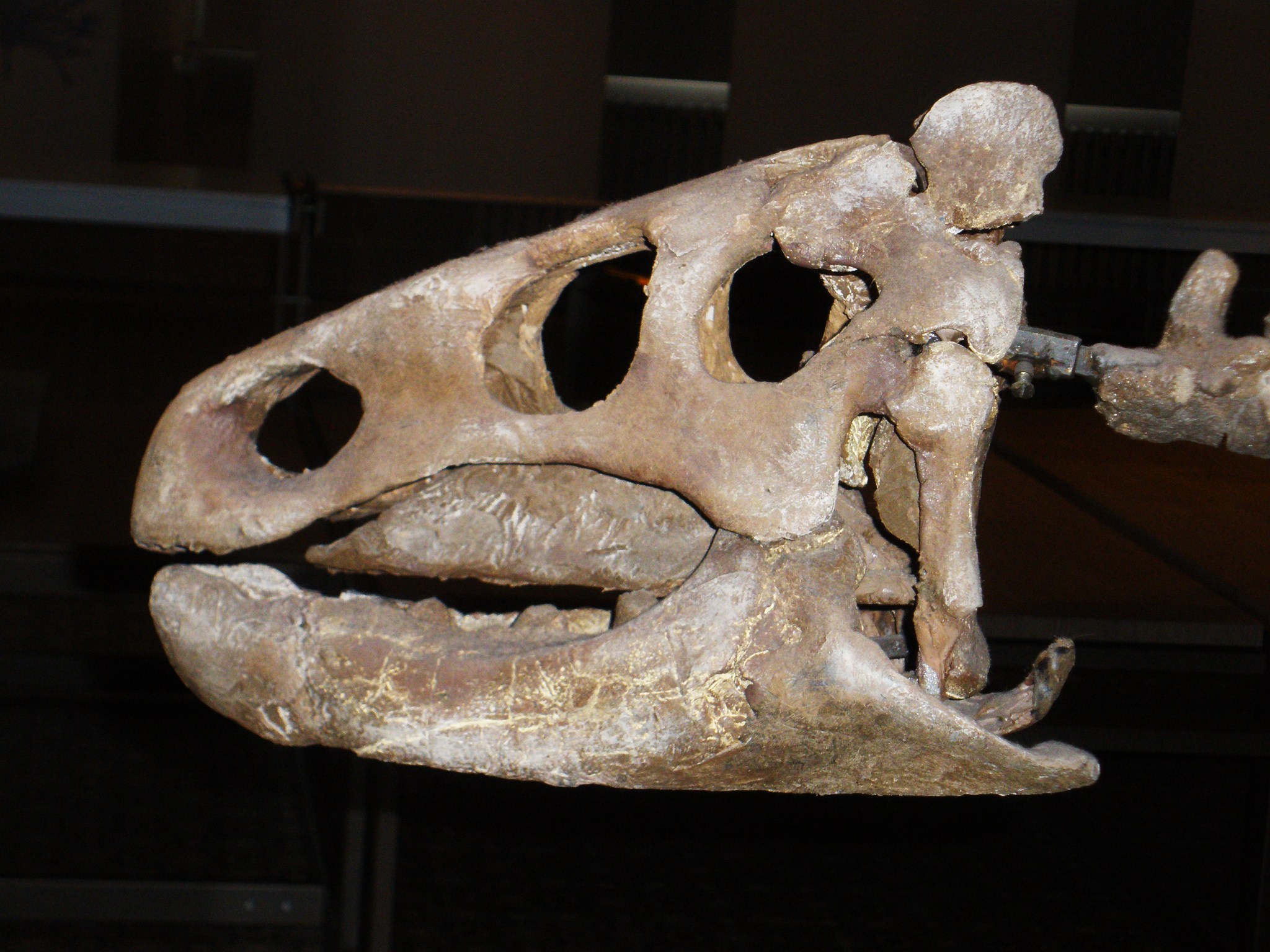|
Cruschedula
''Cruschedula'' is an enigmatic bird genus considered to be ''nomen dubium'' which consists of the single species ''Cruschedula revola''. Description The genus was first described by Florentino Ameghino in his 1899 volume ''Sinopsis geológico-paleontológica. Suplemento. (Adiciones y correcciones.)''. The name was coined by Ameghino from a combination of the ' meaning "shin" and ' meaning "a small sheet of paper". The etymology of the specific epithet is not clear, but possibly from the '. The genus and species were described from a single partial bone which Ameghino considered to be a tarsometatarsus section. The bone was found in Oligocene (Tinguirirican to Deseadan) beds of the Deseado Formation near San Jorge Gulf in Southern Patagonia.''Cruschedula'' at |
Nomen Dubium
In binomial nomenclature, a ''nomen dubium'' (Latin for "doubtful name", plural ''nomina dubia'') is a scientific name that is of unknown or doubtful application. Zoology In case of a ''nomen dubium'' it may be impossible to determine whether a specimen belongs to that group or not. This may happen if the original type series (i. e. holotype, isotype, syntype or paratype) is lost or destroyed. The zoological and botanical codes allow for a new type specimen, or neotype, to be chosen in this case. A name may also be considered a ''nomen dubium'' if its name-bearing type is fragmentary or lacking important diagnostic features (this is often the case for species known only as fossils). To preserve stability of names, the ''International Code of Zoological Nomenclature'' allows a new type specimen, or neotype, to be chosen for a ''nomen dubium'' in this case. 75.5. Replacement of unidentifiable name-bearing type by a neotype. When an author considers that the taxonomic identity of a ... [...More Info...] [...Related Items...] OR: [Wikipedia] [Google] [Baidu] |
Florentino Ameghino
Florentino Ameghino (born Giovanni Battista Fiorino Giuseppe Ameghino September 19, 1853 – August 6, 1911) was an Argentine naturalist, paleontologist, anthropologist and zoologist, whose fossil discoveries on the Argentine Pampas, especially on Patagonia, rank with those made in the western United States during the late 19th century. Along with his two brothers –Carlos and Juan– Florentino Ameghino was one of the most important founding figures in South American paleontology. From 1887 until his death, Ameghino was passionately devoted to the study of fossil mammals from Patagonia, with the valuable support of his brother Carlos Ameghino (1865–1936) who, between 1887 and 1902, made 14 trips to that region, where he discovered and collected numerous fossil faunas and made important stratigraphic observations which helped to support his journal Ameghiniana. Biography Ameghino was born on September 19, 1853 in Tessi, an hamlet of Moneglia, a municipality of Liguria in Ita ... [...More Info...] [...Related Items...] OR: [Wikipedia] [Google] [Baidu] |
Early Oligocene
The Rupelian is, in the geologic timescale, the older of two ages or the lower of two stages of the Oligocene Epoch/Series. It spans the time between . It is preceded by the Priabonian Stage (part of the Eocene) and is followed by the Chattian Stage. Name The stage is named after the small river Rupel in Belgium, a tributary to the Scheldt. The Belgian Rupel Group derives its name from the same source. The name Rupelian was introduced in scientific literature by Belgian geologist André Hubert Dumont in 1850. The separation between the group and the stage was made in the second half of the 20th century, when stratigraphers saw the need to distinguish between lithostratigraphic and chronostratigraphic names. Stratigraphic definition The base of the Rupelian Stage (which is also the base of the Oligocene Series) is at the extinction of the foraminiferan genus ''Hantkenina''. An official GSSP for the base of the Rupelian has been assigned in 1992 (Massignano, Italy). The transi ... [...More Info...] [...Related Items...] OR: [Wikipedia] [Google] [Baidu] |
Deseado Formation
Deseado may refer to: Geographic names and features * Deseado (crater), a crater on the planet Mars * Deseado Department, a department in Santa Cruz Province, Argentina * Deseado Massif, a geological formation in Santa Cruz Province, Argentina * Deseado River, a river in Santa Cruz Province, Argentina * Puerto Deseado, a city in Santa Cruz Province, Argentina Watercraft * SS Deseado, a passenger ship built by Harland and Wolff in 1912 * MV Deseado MV may refer to: Businesses and organizations In transportation * Motor vessel, a motorized ship; used as a prefix for ship names * MV Agusta, a motorcycle manufacturer based in Cascina Costa, Italy * Armenian International Airways (IATA code MV) ..., refrigerated cargo ship built by Harland and Wolff in 1942 * ''Deseado'' (yacht), a yacht abandoned in 2006 See also * {{disambiguation ... [...More Info...] [...Related Items...] OR: [Wikipedia] [Google] [Baidu] |
Penguin
Penguins (order (biology), order List of Sphenisciformes by population, Sphenisciformes , family (biology), family Spheniscidae ) are a group of Water bird, aquatic flightless birds. They live almost exclusively in the Southern Hemisphere: only one species, the Galápagos penguin, is found north of the Equator. Highly adapted for life in the water, penguins have Countershading, countershaded dark and white plumage and flippers for swimming. Most penguins feed on krill, fish, squid and other forms of sea life which they catch with their bills and swallow it whole while swimming. A penguin has a spiny tongue and powerful jaws to grip slippery prey. They spend roughly half of their lives on land and the other half in the sea. The largest living species is the emperor penguin (''Aptenodytes forsteri''): on average, adults are about tall and weigh . The smallest penguin species is the Little penguin, little blue penguin (''Eudyptula minor''), also known as the fairy penguin, whic ... [...More Info...] [...Related Items...] OR: [Wikipedia] [Google] [Baidu] |
Incertae Sedis
' () or ''problematica'' is a term used for a taxonomic group where its broader relationships are unknown or undefined. Alternatively, such groups are frequently referred to as "enigmatic taxa". In the system of open nomenclature, uncertainty at specific taxonomic levels is indicated by ' (of uncertain family), ' (of uncertain suborder), ' (of uncertain order) and similar terms. Examples *The fossil plant '' Paradinandra suecica'' could not be assigned to any family, but was placed ''incertae sedis'' within the order Ericales when described in 2001. * The fossil ''Gluteus minimus'', described in 1975, could not be assigned to any known animal phylum. The genus is therefore ''incertae sedis'' within the kingdom Animalia. * While it was unclear to which order the New World vultures (family Cathartidae) should be assigned, they were placed in Aves ''incertae sedis''. It was later agreed to place them in a separate order, Cathartiformes. * Bocage's longbill, ''Motacilla bocagii' ... [...More Info...] [...Related Items...] OR: [Wikipedia] [Google] [Baidu] |
Telmatosaurus
''Telmatosaurus'' (meaning "marsh lizard") is a genus of basal hadrosauromorph dinosaur from the Late Cretaceous of Romania. It was a relatively small hadrosaur, measuring approximately in length and in body mass, which has been explained as an instance of insular dwarfism. Discovery In 1895 some peasants presented Ilona Nopcsa, the daughter of their lord, with a dinosaur skull they had found at the estate Săcele in the district Hunedoara (then named Hunyad) in Transylvania. Ilona had an elder brother, Ferenc or Franz Nopcsa von Felső-Szilvás who was inspired by the find to become a paleontology student at the University of Vienna. In 1899 Nopcsa named the skull ''Limnosaurus transsylvanicus''. The generic name was derived from Greek λιμνή, ''limné'', "swamp", a reference to the presumed swamp-dwelling habits of hadrosaurs. The specific name referred to Transylvania. Later Nopcsa discovered that the name ''Limnosaurus'' had already been used by Othniel Charles Mars ... [...More Info...] [...Related Items...] OR: [Wikipedia] [Google] [Baidu] |
Sânpetru Formation
The Sânpetru Formation is an early Maastrichtian geologic formation. Dinosaur remains are among the fossils that have been recovered from the formation.Weishampel, et al. (2004). "Dinosaur distribution." Pp. 517-607. It is located in Romania, near Sânpetru village, part of Sântămăria-Orlea commune. It forms a component of the Hațeg Island fauna. Description The Sânpetru Formation crops out in the central to southern Hațeg Basin along the Bărbat River and comprises sandstones and mudstones deposited in a wet floodplain environment characterized by braided fluvial channels. The formation is correlated with the Densuș-Ciula Formation of the northern section of the same basin, both dating to the Maastrichtian of the Late Cretaceous.Solomon & Codrea, 2015, p.26 Fossil content Amphibians Turtles Squamates Crocodyliformes Ornithischians Sauropods Theropods Pterosaurs Mammals See also * List of dinosaur-bearing rock formations This ... [...More Info...] [...Related Items...] OR: [Wikipedia] [Google] [Baidu] |
Othniel Charles Marsh
Othniel Charles Marsh (October 29, 1831 – March 18, 1899) was an American professor of Paleontology in Yale College and President of the National Academy of Sciences. He was one of the preeminent scientists in the field of paleontology. Among his legacies are the discovery or description of dozens of new species and theories on the origins of birds. Born into a modest family, Marsh was able to afford higher education thanks to the generosity of his wealthy uncle George Peabody. After graduating from Yale College in 1860 he travelled the world, studying anatomy, mineralogy and geology. He obtained a teaching position at Yale upon his return. From the 1870s to 1890s, he competed with rival paleontologist Edward Drinker Cope in a period of frenzied Western American expeditions known as the Bone Wars. Marsh's greatest legacy is the collection of Mesozoic reptiles, Cretaceous birds, and Mesozoic and Tertiary mammals that now constitute the backbone of the collections of Yale's Peabo ... [...More Info...] [...Related Items...] OR: [Wikipedia] [Google] [Baidu] |
Zalmoxes
''Zalmoxes'' is an extinct genus of rhabdodontid ornithopod dinosaur from the Maastrichtian of Romania. The genus is known from specimens first named as the species '' Mochlodon robustum'' in 1899 by Franz Nopcsa before being reclassified as ''Rhabdodon robustum'' by him in 1915. In 1990 this name was corrected to ''Rhabdodon robustus'' by George Olshevsky, and in 2003 the species was once more reclassified, this time as the type species ''Zalmoxes robustus''. ''Zalmoxes'' refers to the Dacian deity Zalmoxis, and ''robustus'' to the robustness of the remains. In 2003 another species was named, ''Zalmoxes shqiperorum'', named for the Albanian name for Albanians. History of discovery ''Zalmoxes'' was first known from numerous fossils found in Transylvania, which were named as the species '' Mochlodon robustus'' by Baron Franz Nopcsa in 1899. The specific name referred to its robust build. In 1915 Nopcsa renamed the species as ''Rhabdodon robustum'', amended by in 2003 b ... [...More Info...] [...Related Items...] OR: [Wikipedia] [Google] [Baidu] |
Rhabdodon
''Rhabdodon'' (meaning "fluted tooth") is a genus of ornithopod dinosaur that lived in Europe approximately 70-66 million years ago in the Late Cretaceous. It is similar in build to a very robust "hypsilophodont" (non-iguanodont ornithopod), though all modern phylogenetic analyses find this to be an unnatural grouping, and ''Rhabdodon'' to be a basal member of Iguanodontia. It was large amongst its relatives, measuring long and weighing , with some specimens possibly reaching up to long. Discovery Two species of ''Rhabdodon'' are known, ''Rhabdodon priscus'', the type species, and ''R. septimanicus'' (Buffetaut and Le Loeuff, 1991). ''Rhabdodon'' remains are currently known from southern France, although fragmentary remains from eastern Spain have been assigned to the genus. ''Rhabdodon'' was large compared to its nearest relatives, and indeed one recent paper ( Ősi ''et al.'' (2012)) determined it is larger than the basal rhabdodontid status; from this they suggested that it ... [...More Info...] [...Related Items...] OR: [Wikipedia] [Google] [Baidu] |




.jpg)

